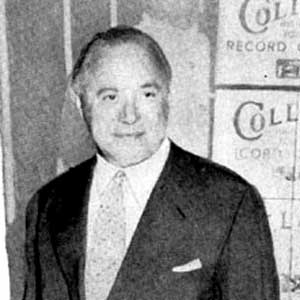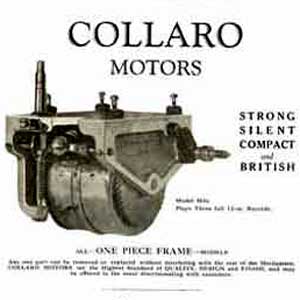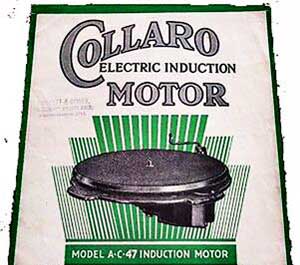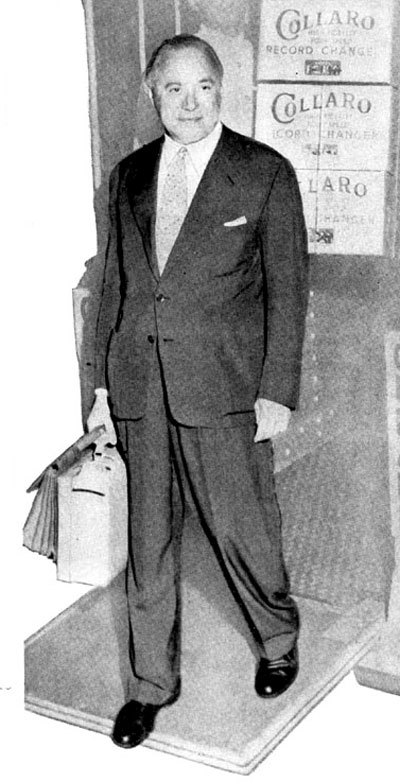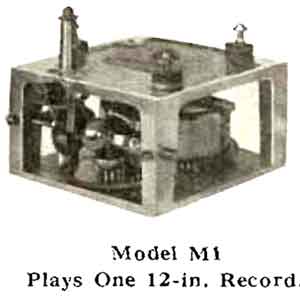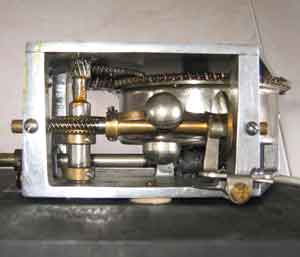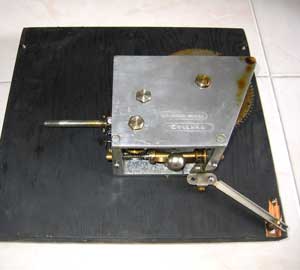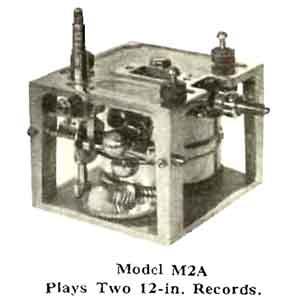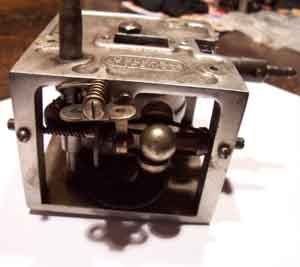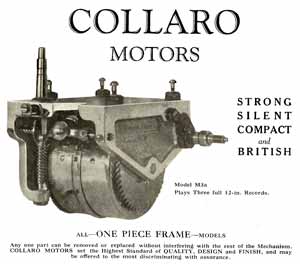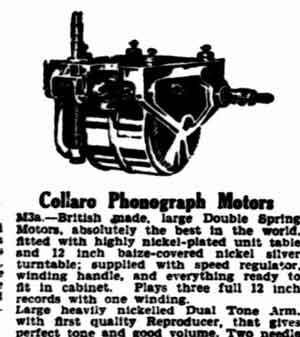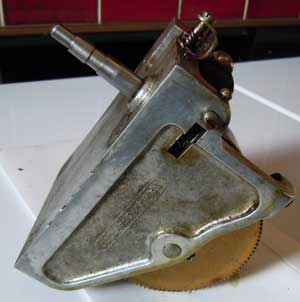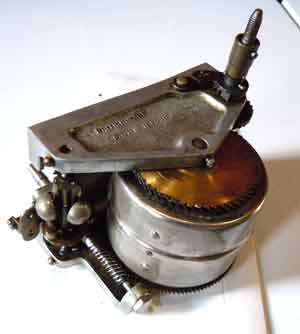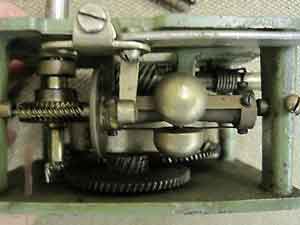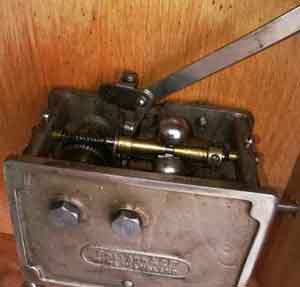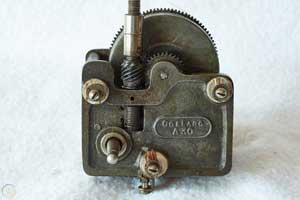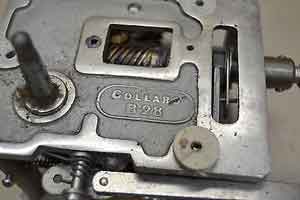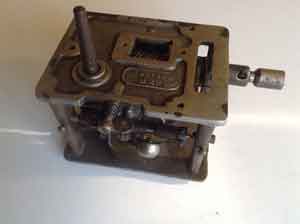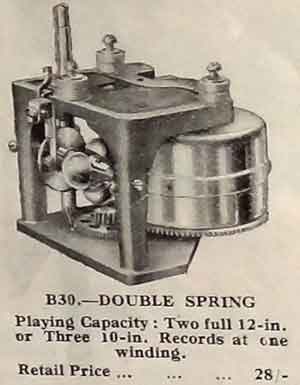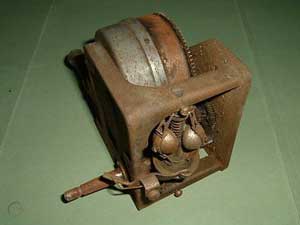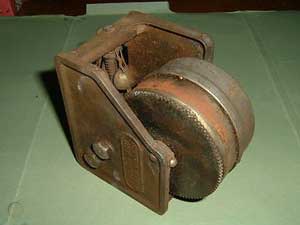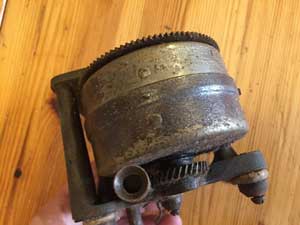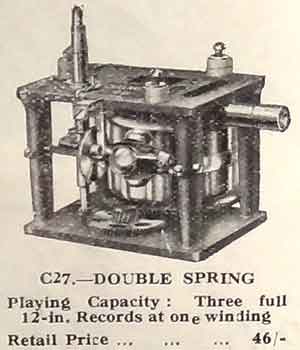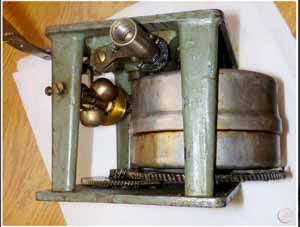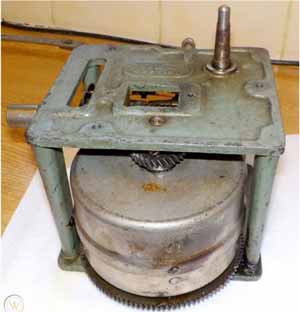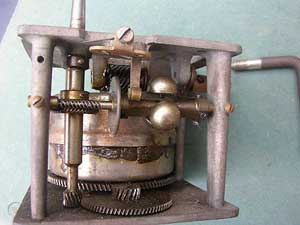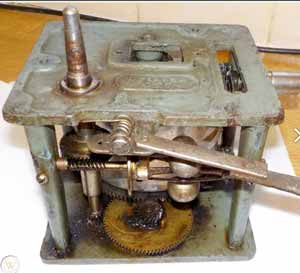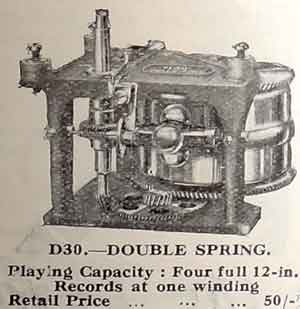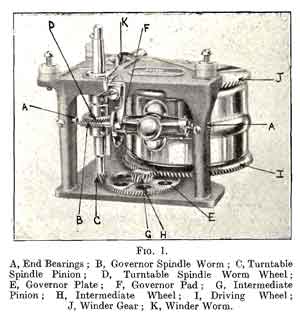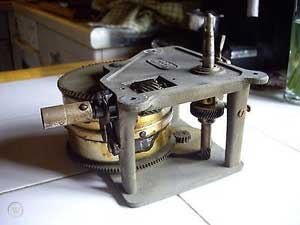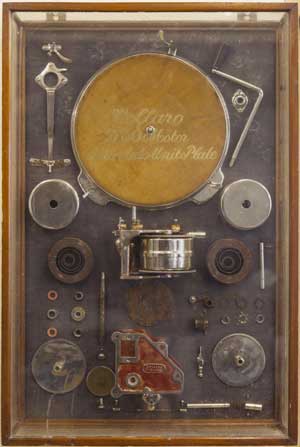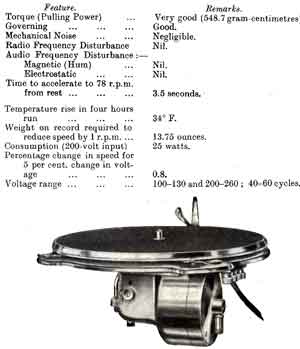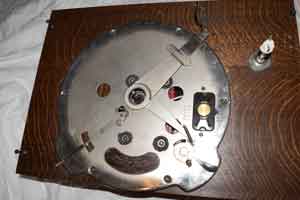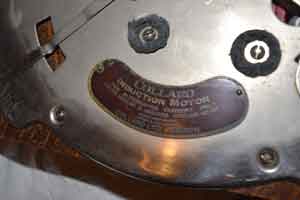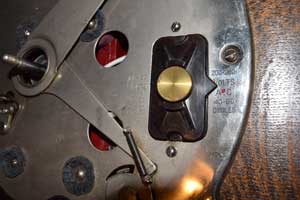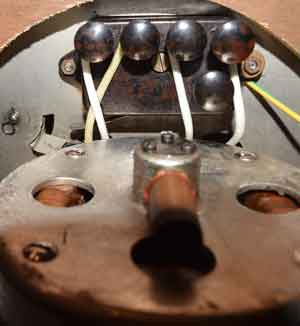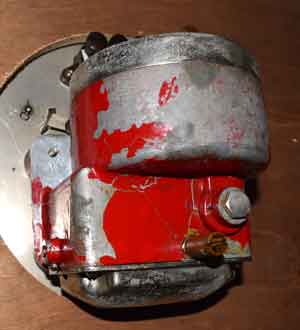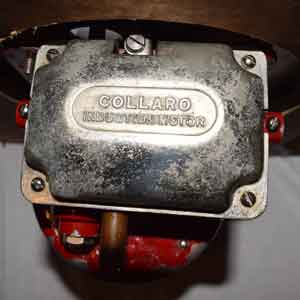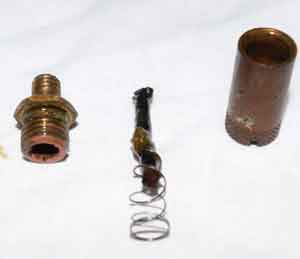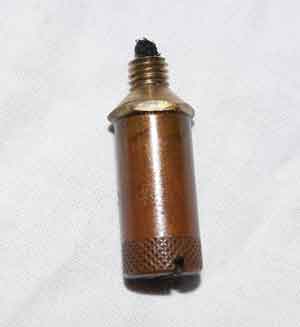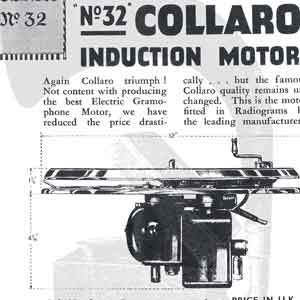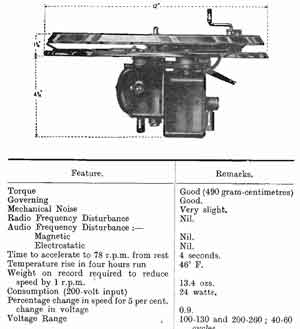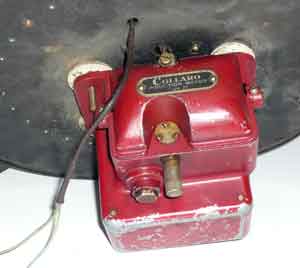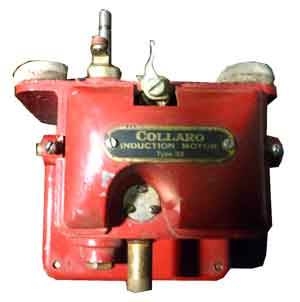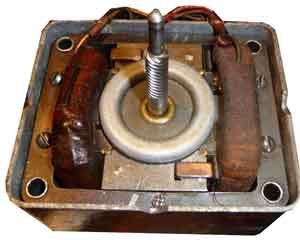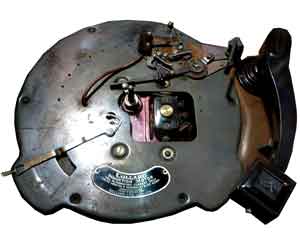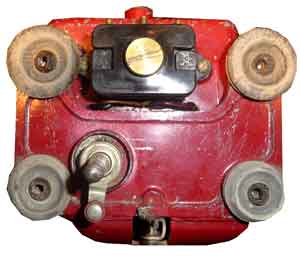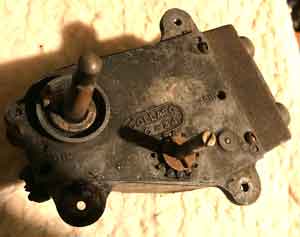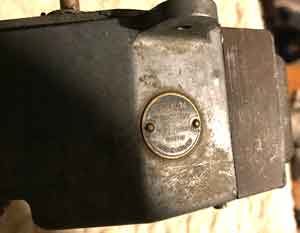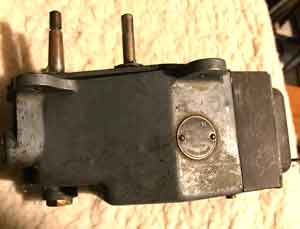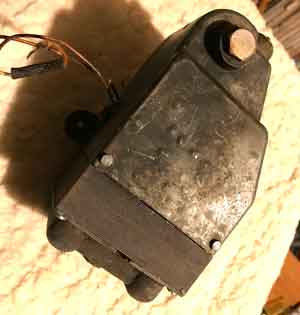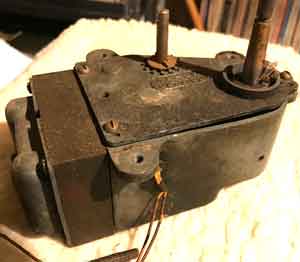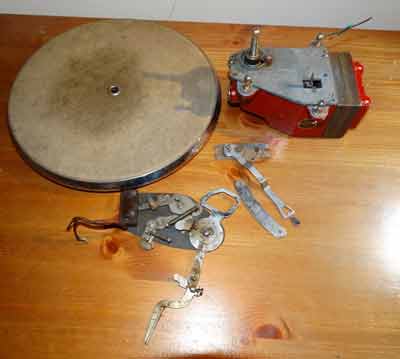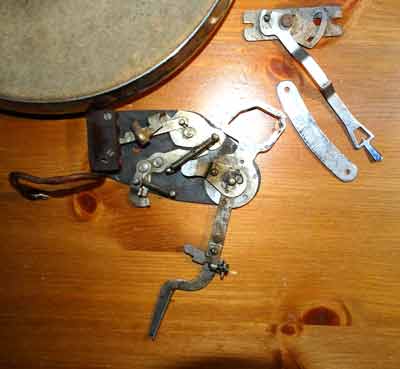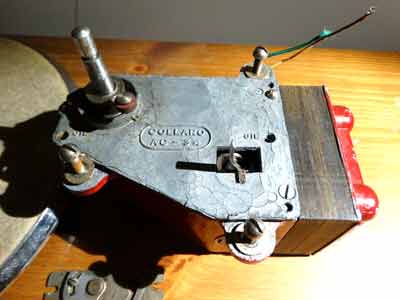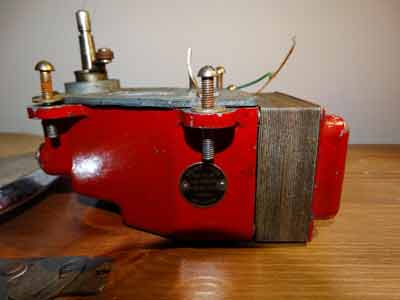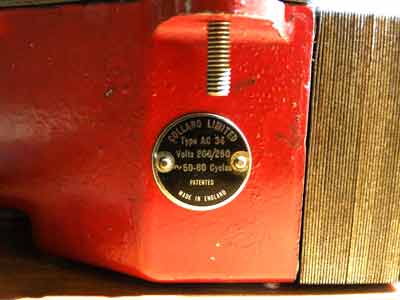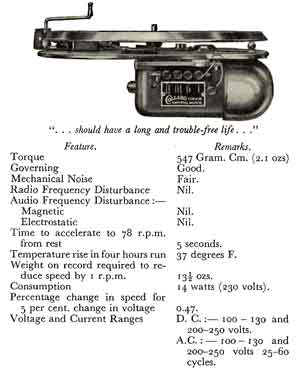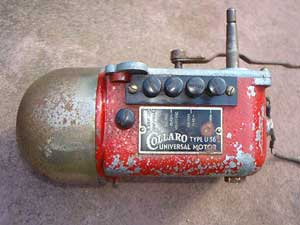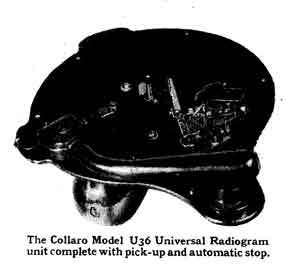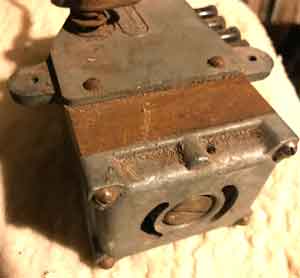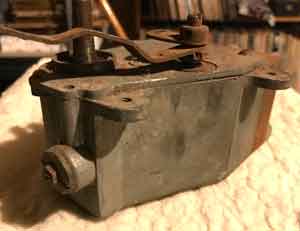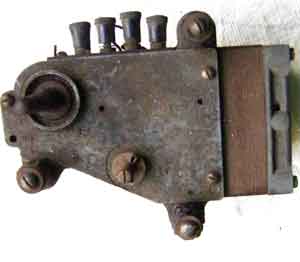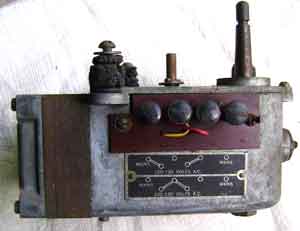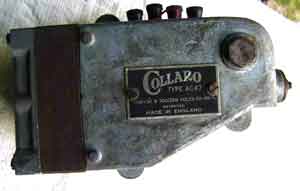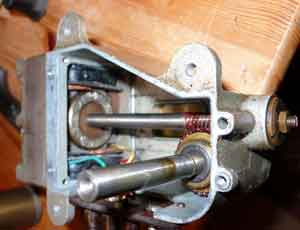Collaro Ltd
COLLARO HISTORY
Collaro Ltd was founded in 1920 by Christopher Collaro (18-06-1895 Constantinople Turkey – March 1986 Poole, Dorset, England); a Greek national who immigrated with his widowed mother to London in his early teens.
The first advertisements for Collaro spring motors appear in the March 1925 edition of The Gramophone. STRONG SILENT COMPACT and BRITISH. Four motors are advertised, suggesting that Collaro had been busy in design and manufacture of these high quality motors. Their unique feature was that the frame was made in one piece so “Any one part can be removed or replaced without interfering with the rest of the Mechanism”. They were mainly sold wholesale to the trade.
Collaro motors were advertised with the very first E.M.G gramophone (Magnaphone of 1925). Thorens or Collaro at £2 extra.
Because of the very high quality of Collaro motors, demand was high and with exports to the US increasing, Collaro moved to larger premises in Peckham, London.
By 1930, Collaro had six new models of spring motors. Still with the one piece frame but even more compact and refined; more importantly, cheaper to produce and now affordable to the general public. They also started manufacturing electric gramophone motors.
During WW2: 1939, the factory was bombed twice. Major Christopher Collaro and his workforce were moved out of London to Langley Mill in Derbyshire. Here the factory was refitted, the workforce enlarged to 2000 and they were set to producing munitions for the war. With the men folk away and fighting in the war,it was the women of the area that were trained up to work the machenery that produced all manner of parts for guns, tanks and aircraft.
There is a wonderful book 'Boiler Suits, Bofors and Bullets' published in 1999 by Derbyshire County Council which has some intreguing stories from some of the women who worked there during the war. It also features lots of photographs from a photoalbum donated to the council by Mr Collaro's daughter upon his death.
After the war, Collaro moved down south again and set up at Barking, Essex. They resumed manufacturing gramophone parts. Now concentrating on record changers and also producing Collaro branded record players and related accessories.
Christopher Collaro and Collaro Ltd held dozens of patents for improvements in gramophones from 1930 to 1959, when Collaro was sold and it’s assumed Major Collaro retired.
Collaro Ltd was sold off to the American conglomerate, Magavox. By 1961 Collaro was described as the largest manufacturers of record changers in the United Kingdom. In 1974, Magnavox were acquired by Philips and the Collaro name died.
COLLARO TIMELINE
- 1920: Collaro Ltd was founded by Christopher Collaro at 23 Garway Rd, London W2
- 1924: Collaro Ltd became a listed Private company and started production of spring motors for gramophones
- 1925: Peter Collaro born. As an adult he became an engineer with his father at Collaro
- 1926: Collaro move to Culmore Works, Culmore Rd, Peckham, London. S.E.15. Continued manufacturing Collaro branded spring motors and also branding them for other gramophone makers like Fullotone
- 1929: Collaro appeared at the British Industries Fair as a listed exhibitor. Manufacturers of Gramophone Motors and Accessories. 'Any one element can be removed or replaced without interfering with the rest of mechanism. Special Unitplate embodying automatic stop'. Torque and Fatigue Spring Testing Machine
- 1930: Six new spring motors introduced
- 1932: November. Collaro started designing pickups. They were in production by early 1933
- 1933: August. The new Collaro Automatic Record Player was introduced. Unique in it's design; it had a slot where any size record was inserted. This started the operation and on completion, the record was "ejected". Originally appeared in Brunswick radiograms but by January 1934, Collaro were using them in their own branded cabinets
- 1936: November. Collaro introduced their first Automatic Record Changer selling at 10 guineas
- 1940/41-47: WW2. Collaro moved to Valley Works, Langley Mill, Nottingham, Derbyshire. 2,000 employed there making munitions
- 9th January 1946: Major Christopher Collaro, Managing Director, Collaro Ltd, awarded the OBE
- 1947: Major Christopher Collaro became a naturalised British subject
- 1948: Collaro moved south again to Ripple Works, By-Pass Rd, Barking, Essex and started manufacturing gramophone record changers and accessories. Collaro also started work on tape recording equipment
- 1958: Christopher Collaro (founder of Collaro Ltd) and A W M Hartley joined the board of Camp Bird Ltd, who was connected to R. N. Fitton Ltd, of Ambassador Radio Works and Hartley-Baird of television fame. Baird equipment started using Collaro tape decks. Camp Bird Ltd were an established gold mining company but in the late 1950s became an industrial and trading group in the electrical industry. The company was built up and concentrated into the subsidiary Hartley Baird Limited. It did not last long and in 1960, Camp Bird Ltd was restored as a mining house
- 1959: September. Last patent granted to Christopher Collaro at Collaro Ltd. Major Collaro retires?
- 1960: Collaro was taken over by Isaac Wolfson, chairman of Great Universal Stores (G.U.S. or Gussies). Soon after Collaro Ltd was sold off to the American company, Magavox.…“it was reported in US publication 'Billboard' that the President of the American Magnavox corporation, Frank Freimann had announced the 'acquisition' of Collaro, along with managing director of Collaro, Isaac Wolfson. However, he is also reported as noting that "the linking of the two firms carries not only product but distribution ramifications," which suggests some sort of cooperative alliance with acquisition of selling rights rather than a total 'buy-out'. Isaac Wolfson, a major British industrialist, was at the time also the head of Great Universal Stores, a large chain of retail outlets throughout Britain, Continental Europe, and the British Empire, suggesting perhaps that an earlier link-up took place between Wolfson and the originators of Collaro”…..
- 1961: Collaro described as the largest manufacturer of record changers in the United Kingdom
- 1974: Magnavox was acquired by Philips
- March 1986 Christopher Collaro died in Poole, Dorset
Here is a quick reference page for Collaro Spring Motors.
Dates for Collaro motors are subjective and are taken from advertisement and dated catalogues. It does however seem plausible that at least the electric motors were names by the year they were released. All the advertisements and reviews I have read seem to bear this out.
This page will attempt to document spring and early electric motors used in gramophones. It will not cover the plethora of Collaro record changers and players.
COLLARO SPRING MOTORS
1925 advertisment in The Gramophone magazine:
Models: M1; M2; M2a & M3a
| Model | Date | Frame | Governor | Features | Spring # | Width x Thickness | Spring Length | Outer End | Inner End |
|---|---|---|---|---|---|---|---|---|---|
| Collaro M1 | 1924/25 | One piece cast | Ball | First Collaro Motor | Single | 7/8” x 0.020" | 11' 6" | Pear | Hole |
| Collaro M2 | 1924/25 | One piece cast | Ball | Used in early EMG gramophones | Single | 7/8” x 0.022" | 11' 9" | Pear | Hole |
| Collaro M2a | 1924/25 | One piece cast | Ball | One piece frame | Double | 3/4” x 0.023" | 13' | Pear | Hole later Hub |
| Collaro M3a | 1924/25 | One piece cast | Ball | Vertical barrels | Double | 1 1/4” x 0.024" | 19' 8" | Keyhole | Hole |
Pictures of Collaro M3a courtesy of Graham Rankin
1930 advertisment in The Gramophone magazine:
Models: A27; A28; A30; B28; B30; C27; & D30
| Model | Date | Frame | Governor | Features | Spring # | Width x Thickness | Spring Length | Outer End | Inner End |
|---|---|---|---|---|---|---|---|---|---|
| Collaro A27 | pre-1930 | One piece cast | Ball | Single | 7/8” x 0.024" | 10' 6" | Pear | Hub | |
| Collaro A28 | 1930 19/- | One piece cast | Ball | Improved winder mechanism | Single | 7/8” x 0.024" | 10' 6" | Pear | Hub |
| Collaro A30 | 1930 19/- | One piece cast | Ball | Compact | Single | 7/8” x 0.022" | 8' 9" | Pear | Hole |
| Collaro B28 | 1930 33/- | One piece cast | Ball | Two-spring A28 | Double | 3/4” x 0.023" | 8' 9" | Pear | Hub |
| Collaro B30 | 1930 28/- | One piece cast | Ball | Two-spring A30 | Double | 3/4” x 0.023" | 8' 10" | Pear | Hub |
| Collaro C27 | 1930 46/- | One piece cast | Ball | Two-spring A27 | Double | 1” x 0.024" | 14' 9" | Pear | Hub |
| Collaro D30 | 1930 | One piece cast | Ball | Larger B30 | Double | 1” x 0.028" | 15' 6" | Pear | Hub |
COLLARO ELECTRIC MOTORS
Collaro Induction Motor "Empire": The Gramophone review, July 1931. £3.
The first Collaro electric motor.
- The turntable is driven through gearing by a high speed motor in a drum-shaped armature
- All moving parts, including the governor are enclosed in a one piece aluminium casting
- Both main bearings are fitted with spring-loaded wick lubricators
- Incorporated in the vertical turntable spindle is a flexible coupling which ensures freedom from speed fluctuation due to variations in supply voltage
- The circuit includes a pre-set automatic stop switch
- Ingenious reversible contact plate for adjusting voltage for 100/130 to 200/250 volts A.C.
- Here is a picture of the WIRING of this motor to the block. Looking into the motor behind the governor there are 4 wires from the stator. Top left-Thick brown. Top right-Thick black. Botton right-Thin brown. Bottom right-Thin black.
- This one fitted to an EXPERT Senior
Collaro No32 Induction Motor: First mentioned in The Gramophone, March 1932.
£2. 5s. 0d & £2. 10s. 0d. with unit plate
This was basically the same as the earlier "Empire" induction motor except Collaro managed to reduce the price even further.
- Less torque than the "Empire" motor but still adequate for most users
- More compact design
- Stator changed from the huge cylinder shape to a more compact rectangular shape with fewer field coils
- As fitted to the EXPERT Audio Player
Collaro AC-34
There is mention in The Gramophone magazine of 1934, of Collaro working on new AC motors but I have found no details until finding pictures of this AC-34 motor on a Polish site. With just the one standard voltage, perhaps they were only made for the export market
- AC-34 turntable motor 200 / 250V 50 cycles only
- Compact design
- Note the later AC-34 with a different lever speed adjustment, cheaper pot-metal body and ~50-60 cycles
Collaro U-36. Universal AC/DC motor: 1936. £3. 5s. 0d.
With Unitplate and pickup 85/-, and with volume control 87/-.
First mentioned in The Gramophone magazine in August 1936
- There is mention of a Collaro Universal motor in July 1934 but I cannot find any information on that model
- Universal motor. AC or DC, 100-130 & 200-250V 25 to 60 cycles
- Was often used in the Collaro Automatic Record Player and in Collaro record changers
Collaro AC-37. Dual Voltage: 1937
First mentioned in The Gramophone magazine in September 1937
- AC-37 turntable motor 100-130 & 200-250V 50/60 cycles
- Was often sold as a complete unit. Comprising of a motor mounted on a plate with Collaro tonearm. Here are a few pictures of a boxed unit. AC-37
Collaro AC-47. Dual Voltage: 1947
Probably the most popular electric motor produced by Collaro. Basically an updated AC-37
- AC-47 turntable motor 100-130 & 200-250V 50/60 cycles
- Was often sold as a complete unit. Comprising of a motor mounted on a plate with Collaro tonearm. Here is a noisy video of a working Collaro AC-47
